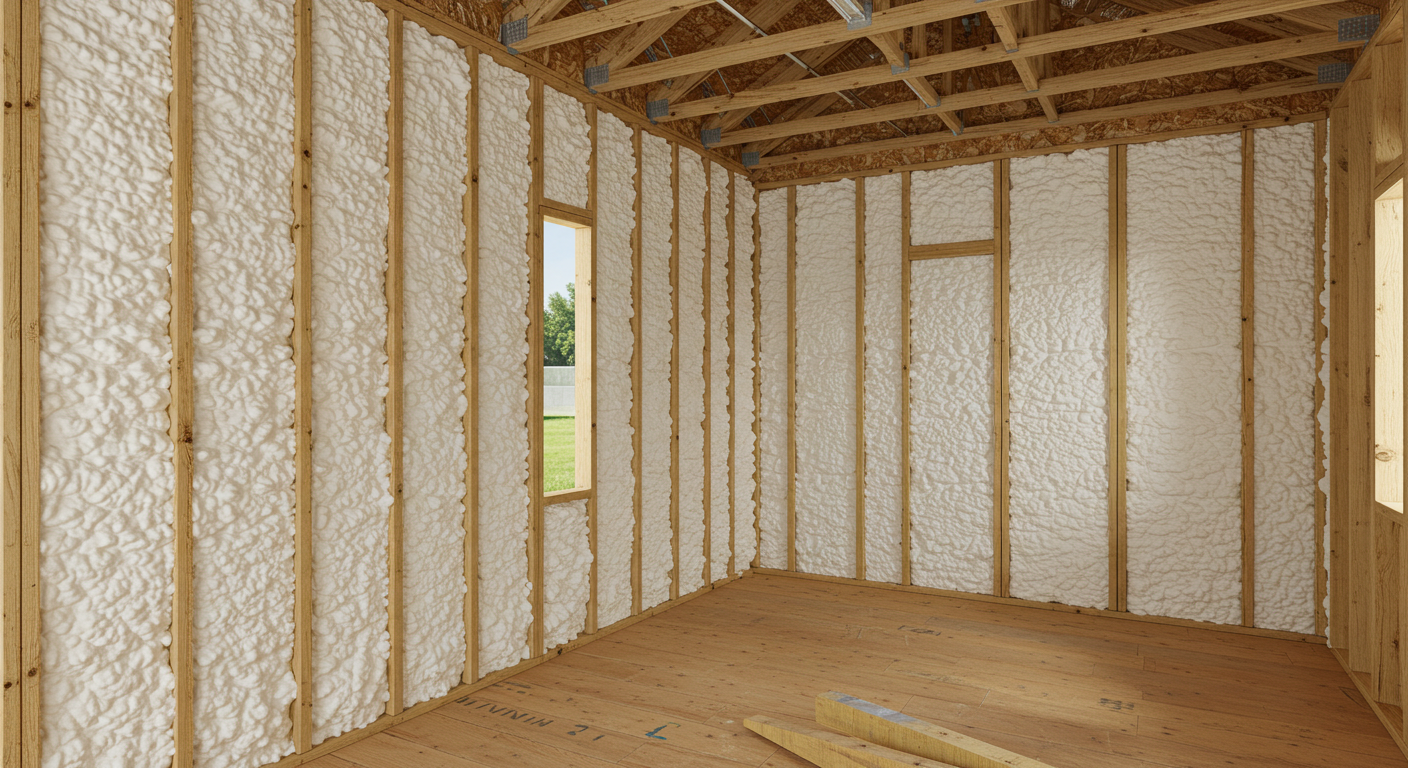
Walk into any older home in Joplin, and you’ll likely notice it right away—uneven temperatures from room to room, drafty hallways in winter, and high cooling bills in the summer. What many homeowners don’t realize is that inefficient insulation is quietly draining their budget every single month.
That’s why more and more folks in the Joplin area are looking at spray foam insulation not just as an upgrade—but as a smart investment. It’s not the cheapest option upfront, but the long-term savings, comfort, and durability make it hard to ignore. So, is it worth it for your home? Let’s break it down in plain terms.
Let’s be honest—our Missouri weather isn’t exactly predictable. Hot, humid summers and chilly, damp winters can do a number on your heating and cooling costs. Older homes especially tend to leak air like a sieve, making your HVAC work overtime.
Here’s where spray foam comes in. Unlike fiberglass batts that just sit between studs, spray foam expands to seal every gap, crack, and crevice. That means fewer drafts, better air control, and much lower energy waste.
Here’s what homeowners notice after installing spray foam:
It’s not just about being comfortable—it’s about being smart with your home’s energy.
| Factor | Spray Foam | Traditional Insulation |
|---|---|---|
| Energy Savings | 30–50% or more | 10–20% (average) |
| Lifespan | Over 20 years | 5–10 years |
| Sealing Capability | Excellent (air-tight) | Low to moderate |
| Upfront Cost | Higher | Lower |
| Resale Value Impact | Moderate to strong | Minimal |
Yes, the upfront cost of spray foam is higher—but over time, it actually pays you back. Whether it’s in smaller monthly energy bills or a higher resale value, the return often outweighs the initial spend.
Missouri homes—especially in older neighborhoods—often weren’t built with modern insulation standards in mind. That’s part of why energy bills can feel so out of control.
With spray foam, the air leakage is significantly reduced. In fact, according to Energy Star, sealing air leaks and upgrading insulation can cut heating and cooling costs by as much as 15%—sometimes more when foam is used in attics and crawl spaces.
And those savings aren’t just for new homes. Even small upgrades in key areas (like the attic or rim joists) can make a real impact. One homeowner in Joplin reported their summer cooling bill dropped by over $100 a month after just insulating the attic.
Good insulation doesn’t just benefit you—it can impress future buyers, too. With energy prices rising and sustainability becoming a bigger concern, many homebuyers now look for energy-efficient features when shopping for a home.
Spray foam is a standout. Realtors in the area have started noting homes with upgraded insulation tend to sell faster and sometimes at a higher price point, especially if utility savings can be shown.
Zillow’s research even shows that homes with energy-efficient upgrades can sell for 3–5% more than similar homes without them.
For most homeowners, the answer is: sooner than you think. Spray foam tends to pay itself off in 3 to 5 years, depending on:
But here’s the kicker: once you hit that break-even point, everything after that is pure savings—year after year.
And unlike fiberglass, which can compress or settle, spray foam holds its shape and performance for decades. That means no costly touch-ups or replacements down the line.
“Isn’t spray foam too expensive?”
It’s more upfront, yes—but when you calculate the long-term savings, it usually ends up being the cheaper choice overall.
“Will it work in my older home?”
Absolutely. In fact, older homes benefit the most, since they tend to leak more air. Spray foam can be applied to attics, crawl spaces, and even walls during renovations.
“Does it last?”
Spray foam doesn’t just last—it stays strong for over 20 years with minimal maintenance. No sagging, no critter damage, and no rot.
[Image Placeholder: Local homeowner standing in front of their home after insulation upgrade]
After insulating her 1950s ranch-style home, one Joplin resident told us her home “finally feels sealed up. No more cold air pouring in under the doors or from the attic.” She noticed a difference in comfort within a few days—and saw the savings on her very next utility bill.
Yes—our region’s temperature swings make energy-efficient insulation a must. Spray foam helps keep your home stable inside year-round.
Most people see noticeable savings in the first year, with full ROI usually within 3–5 years.
It can. Buyers today appreciate energy-efficient upgrades, especially ones that reduce monthly costs.
Not at all. Our team works quickly and cleans up thoroughly. Most projects are done in a day or two.
Sometimes. Utility companies and state programs occasionally offer incentives for energy efficiency upgrades. We’ll help you check eligibility.
If you’re tired of unpredictable energy bills, hot spots in the summer, and cold feet in the winter, spray foam insulation might be the smartest upgrade you can make to your home this year.
The team at Ozark Eco Foam has helped hundreds of Joplin homeowners make their homes more comfortable and affordable. We’d be happy to take a look at your space and give honest feedback on what kind of results you can expect.
📞 Ready to Get Started?
Ozark Eco Foam
Serving Joplin, MO & surrounding towns
📞 (620) 383-9092
📧 ozarkecofoam@gmail.com
🌐 Visit us at ozarkecofoam.com